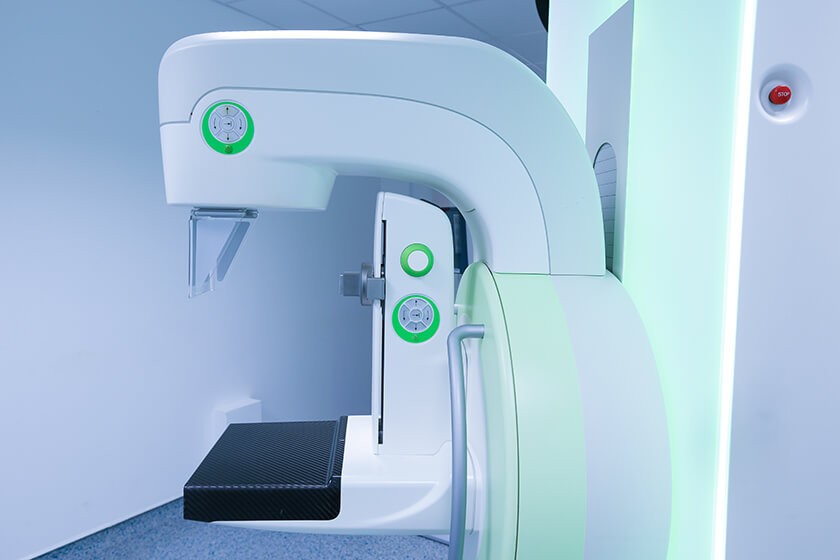
3D Mammography: The Key to Early Breast Cancer Detection

October is Breast Cancer Awareness Month, and if you’ve been putting off having a mammogram performed, now is a great time to get it done. The American Cancer Society says women should begin having annual mammograms every year beginning at age 45, or earlier for women who have increased risks for breast cancer or who wish to have them performed between the ages of 40 and 44. If you’re 55 or older, the ACS says you should have a mammogram every two years.
Mammogram technology has changed a lot in recent years, and today’s 3D mammograms provide more detail than ever before to make it easier to spot and diagnose breast cancer early, when treatment is most straightforward and most successful. If you’ve been considering a mammogram, here’s what you should know about 3D mammography.
What is 3D mammography?
3D mammography is a breast exam that’s performed in addition to your regular 2D mammogram. Once your 2D mammogram is complete, a separate computerized “arm” passes over your breast tissue in an arc. The technology is designed to capture a series of images of your breast tissue. Then a computer takes that data and creates a highly-detailed 3D model of your breast tissue, revealing very thin “slices” of tissue that make it much easier to see tiny defects or unusual areas that may need additional evaluation. These images can be viewed one after another, like the pages in a book, or they can be viewed as an entire 3D image. 3D mammography is also called breast tomosynthesis.
What is the benefit of having a 3D mammogram in addition to a traditional 2D scan?
The 2D images in a traditional mammogram provide clear images of your breast tissue, but they can’t provide as much detail as a 3D scan. Breast tissue is complex, and in a 2D exam, it’s not uncommon for some tissue to overlap and obscure details in deeper layers of tissue, hiding them from view. That means some defects can go unnoticed, including cancerous tumors in their very early stages. Other times, overlapping tissue can give the appearance of a tumor or other suspicious defect, triggering the need for additional scans, even when the tissue is completely normal. Since the 3D scan allows the radiologist to examine multiple layers of tissue “slice by slice,” it’s much easier to determine when a suspicious-looking area is actually normal tissue and when it needs further evaluation.
Does the 3D technique use a lot more radiation?
No. The 3D scan does use some additional radiation, but the amount is relatively minimal and well below government safety standards. At Radiology Affiliates Imaging, we use the most advanced 3D imaging systems and technology for the most accurate images and the lowest amount of radiation, so you can feel confident in your exam and your results.
How is 3D mammography performed?
3D mammography is performed at the same time as your regular 2D mammogram using the same compression. The 3D portion takes just a few minutes to perform, which means the entire mammogram takes about the same time (roughly a half hour) whether or not a 3D scan is performed. And of course, as with a 2D mammogram, you’ll be able to return to your normal routine immediately afterward.
Should I have 3D mammography?
3D mammography is appropriate for anyone who’s having a 2D exam. Because 3D mammography produces individual images of thin sections of breast tissue, it can be especially beneficial for women with very dense breast tissue and for those at an increased risk of developing breast cancer, including those with a family history of the cancer. 3D mammography is also usually a good choice for women who’ve not had a mammogram in the past since it can provide a very detailed baseline that can be used for comparison with images from future mammograms. The decision of whether or not to have a 3D mammogram is something you can discuss with your healthcare provider. In most cases, the additional benefits, including more detailed images, make the exam a good choice.
Is 3D mammography covered by medical insurance?
It’s important to note that while a 3D mammogram offers an improved image clarity over its 2D predecessor, some insurance providers consider 3D mammography “experimental” and may not cover the procedure. It is always best to check with your insurance provider to make sure this procedure is covered.
That depends on your insurance plan. Some plans cover the cost of the 3D portion of the exam and some do not. Our office staff can help you determine your coverage limits or you can call your insurer and ask before your visit.
Learn more about 3D mammography – Schedule your mammogram today.
About 310,000 new cases of breast cancer are diagnosed each year in the U.S., many in more advanced stages. Having regular mammograms is a safe and effective way to reduce your risks for breast cancer and to catch cancer in its earliest and most treatable stages. To schedule your mammogram and to learn more about 3D imaging technology, call RAI today at 609-585-8800 or use our online form and we’ll be in touch.




